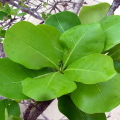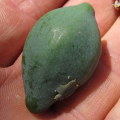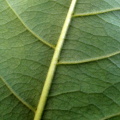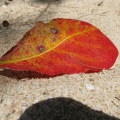�
�

©Anne: Terminalia catappa with leaves beginning to turn red, 3 Sep 2016, at Lizard Island Research Station. The tree in the foreground with much smaller leaves is Terminalia arenicola.
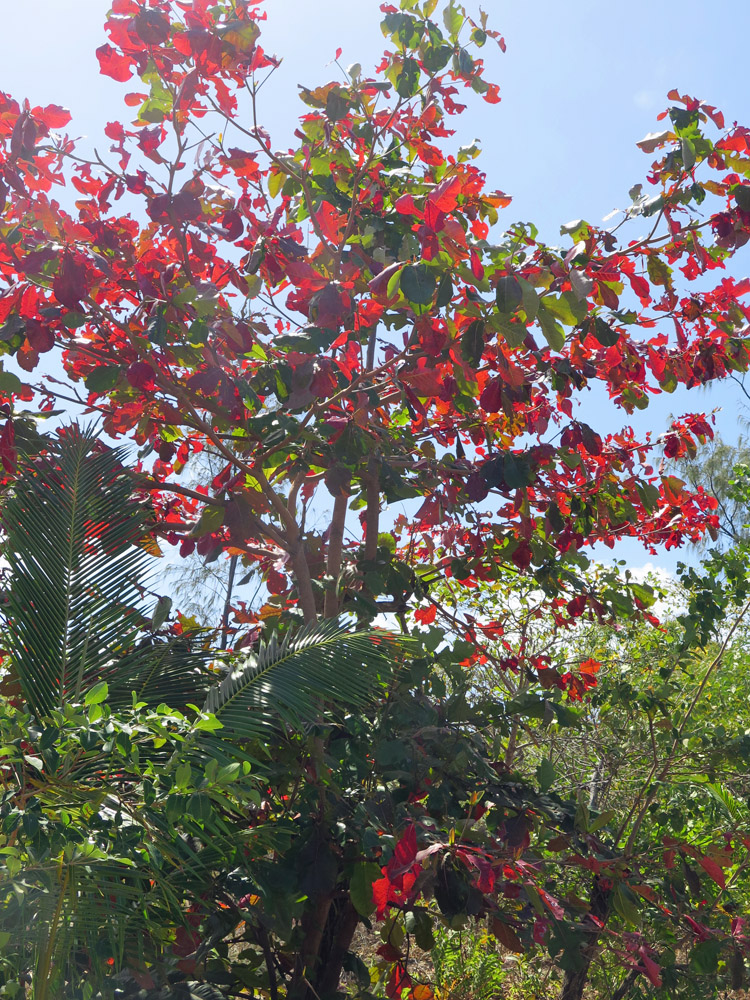
©Anne: Terminalia catappa at Lizard Island Research Station, well-advanced in turning red on 12 August 2017.
�
���
Terminalia catappa
Indian Almond

©Anne: Terminalia catappa with leaves beginning to turn red, 3 Sep 2016, at Lizard Island Research Station. The tree in the foreground with much smaller leaves is Terminalia arenicola.

©Anne: Terminalia catappa at Lizard Island Research Station, well-advanced in turning red on 12 August 2017.
Kingdom
Plantae
Division
Tracheophyta
Class
Magnoliopsida
Order
Myrtales
Family
Combretaceae
Genus
Terminalia
Species
Terminalia catappa
Colours
Distinguishing features
A large tree with very large leaves. up to about 35 cm long. Leaves turn to bright red/mauve in late winter before dropping and being replaced very quickly with new leaves. Flowers appear within a few weeks of the new leaves. Distinctive almond-shaped fruits grow up to 10 cm long.
Size
- Size data has not been obtained.
Synonyms
Interesting facts
- Where the veins of this leaf meet the mid vein, smaller than the human eye can see, are hairs that grow out to make a little home for mites (the homes are called domatia). These mites are predators of other leaf-eating mites or eat microbes that have landed on the leaf so these mites are the guardians of the leaves.
Web resources
References
- Byrnes, N.B., S.L. Everist, S.T. Reynolds, A. Specht and R.L. Specht (1977). The vegetation of Lizard Island, North Queensland, Proceedings of the Royal Society of Queensland, 88: 1-15. LIRS catalog number 3.
- Cribb, A.B. and J.W. Cribb (1985). Plant life of the Great Barrier Reef and adjacent shores University of Queensland Press, St Lucia.




